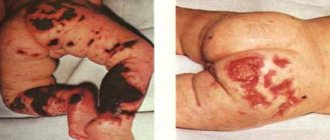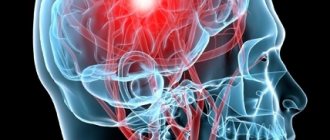Oligodendroglioma
The human brain is made up of many supporting cells called glial cells . Any tumors of these cells are called gliomas . Oligodendroglioma is a brain tumor that arises from a type of glial cell called oligodendrocytes . They are specialized brain cells that produce myelin , the fatty covering of nerve cells. Regardless of the degree of malignancy, treatment of oligodendroglioma is indicated in almost all cases due to compression of healthy brain structures.
Oligodendrogliomas can appear in different parts of the brain, but they are most often found in the frontal or temporal lobes of the brain. The frontal lobes are responsible for knowledge, thinking, learning and judgment. The temporal lobes are responsible for coordination, speech, hearing, memory and awareness of time.
There are two types of oligodendrogliomas:
- well-differentiated oligodendroglioma - a tumor that grows relatively slowly and has a definite shape
- anaplastic oligodendroglioma , which grows much faster and does not have a clearly defined shape
Anaplastic oligodendroglioma is quite rare compared to well-differentiated ones.
The causes of oligodendrogliomas are not known, however, most people with these types of tumors have some type of genetic mutation on chromosome 1, chromosome 19, or both chromosomes 1 and 19. Oligodendroglioma is not contagious.
Characteristics of the disease
Oligoastrocytoma is a neuroglial tumor that develops from oligodendrocytes. The neoplasm has clear boundaries with a pale pink tint.
The tumor affects people of any age group, with men between 20 and 40 years of age most often affected. The disease is not common. There are only 3% of patients with tumors in the brain. In women this is a rare phenomenon, and in children it is observed in isolated cases.
The formation is formed from non-standard cellular structures of oligodendrocytes. From them, normal protective nerve cell sheaths are formed. Such growths are heterogeneous and may have cysts that deposit calcareous components.
As the tumor grows, it grows into the cerebral cortex. It is capable of reaching large sizes and having expansive development. It is possible that a cyst may form inside the tumor. The internal development of cysts takes a long period of time. Such a tumor is difficult to treat with medication, so surgery is required to remove it. In case of untimely treatment, glioblastomas are formed.
Oligodendroglioma is localized in the frontal or temporal lobe. However, development in any area of the brain is theoretically possible. Rare formations are seen in the cerebellum, brain stem, and optic nerve. Slowly becoming larger, it gradually grows into gray matter, possibly reaching significant sizes.
The central nervous system consists of 40% neuroglia. This is the nervous tissue that surrounds neurons, participates in their intracellular metabolism, as well as in the creation and transmission of nerve impulses.
Oligodendroglia are a type of neuroglia found only in the spinal cord and brain. Oligodendrocytes protect the axons that carry nerve signals to organs. A special cell wraps part of the nerve ending in the myelin sheath.
The oligodendrocyte consists of a large number of processes and covers up to 50 axons. Under the influence of external or internal factors, a malignant formation is formed in oligodendroglial tissue.
Classification of oligodendrogliomas
There are three types of oligodendroglioma, depending on their aggressiveness and behavior.
Oligodendroglioma grade 2
This is a typical oligodendroglioma of the brain. It is characterized by slow growth, low aggressiveness and mitotic activity of cells. How long people live after surgery to remove a tumor is an individual question. In this case, the prognosis is usually favorable than when diagnosing other types of tumors.
Note. Stage 2 brain oligodendroglioma is diagnosed more often than other tumors of this type.
Anaplastic oligodendroglioma grade 3
Anaplastic oligodendroglioma is characterized by high aggressiveness. Neoplasia is characterized by rapid cell growth and its spread to neighboring tissues. It is a fairly rare type of neoplasm. They account for about one percent of all malignant neoplasms in the brain.
Most often, anaplastic oligodendroglioma forms in the frontal lobe of the brain; somewhat less frequently, the tumor forms in the temporal region. Clinical signs are similar to other neoplasms of this genus, but for anaplastic oligodendroglioma the main distinguishing feature is the formation of convulsive or nervous seizures, which is typical both for the primary tumor and for relapses that malignize into anaplastic glioma, a more dangerous type of cancer.
The note. Anaplastic oligodendroglioma is more common in adults.
The histological feature of anaplastic oligodendroglioma is that pathogenic cells are characterized by a high level of mitotic activity. In this case, cellular atypia is noted. In rare cases, necrosis develops; small blood vessels can grow strongly in the tumor.
Anaplastic oligodendroglioma is characterized by the presence of pathological reactive astrocytes. This feature can complicate diagnosis, because even experienced clinicians sometimes have certain difficulties in differentiating oligodendroglioma and glioblastoma with oligodendroglial elements.
Treatment of anaplastic oligodendroglioma is only radical, followed by radiation and chemotherapy. It is important to remove the entire oligodendroglioma, or if this is not possible, then most of it.
Oligoastrocytoma of the brain
Brain oligoastrocytoma is a mixed type tumor. It is classified as the third degree of malignancy. A characteristic feature of brain oligoastrocytoma is that it can degenerate into glioblastoma, a dangerous type of cancer. Oligoastrocytoma is characterized by rapid growth, damage to nearby brain tissue and metastases. This poses a real threat to life, so the survival rate in this case is low (stages 3 and 4 of carcinogenesis/grade).
Note. There is no first-grade oligodendroglioma.
Frequent areas of localization and risk group
Oligoastrocytoma is a rare cancer that occurs in 3% of all brain tumors.
Since it consists of specialized cells of the nervous system, it is quite logical that it is formed in the human central nervous system - in the white matter of the brain in the area of the brainstem or cerebellum, less often - on the optic nerve. The preferred area of localization of the formation is the frontal or temporal lobes.
Slowly increasing in size, the tumor begins to gradually grow into the gray matter, sometimes reaching gigantic proportions.
Since it consists of specialized cells of the nervous system, it is quite logical that it is formed in the human central nervous system - in the white matter of the brain in the area of the brainstem or cerebellum, less often - on the optic nerve. The preferred area of localization of the formation is the frontal or temporal lobes.
Neuroglial tumors occur at any age, predominantly in the male half of the population. Occurs in 3% of men. It develops slowly and is located in the white matter of the cerebral hemispheres.
If the pathology is not treated, it can reach significant sizes. It is diagnosed along the walls of the ventricles, can penetrate into their cavity and grow into the cerebral cortex. Very rarely localized directly in the cerebellum, optic nerve and brain stem.
The neoplasm has a pale pink tint and a clear outline. Cysts may form inside. Develops over a long period of time. This tumor cannot be cured with medication; surgical intervention is required.
The patient first undergoes a thorough examination. Oligodendroglioma is distinguished by the presence of petrificates; most patients continue to live with the tumor for five years after diagnosis and before the start of therapy.
Causes
Experts have not been able to establish the reasons for the development of brain tumors. It is assumed that various factors can provoke tumor formation.
Age
According to statistics, most often such a neoplasm is diagnosed in patients over the age of 40 years.
Experts explain this by saying that immunity decreases with age, and external factors begin to have an even greater impact.
Gender
Oncological pathologies in which the structures and membranes of the brain are damaged are observed more often in men.
Women are less susceptible to developing the disease.
Heredity
Scientists determined that most patients with established oligodendroglioma had close relatives who suffered from cancer.
It is believed that genetic predisposition plays a large role in the development of many cancers.
Radiation therapy
Based on the data, it was found that radiation therapy previously carried out for the treatment of other diseases is also of great importance and can cause the occurrence of a pathological process.
Inflammatory diseases
According to experts, the development of a brain tumor can be triggered by diseases accompanied by inflammatory processes affecting the meninges.
Such pathologies include meningitis. In the absence of therapy or improper treatment, a tumor may develop.
Classification of tumors
In clinical neuro-oncology, neoplasms (oligodendroglioma) are classified as follows:
- Well-differentiated oligodendroglioma (grade II malignancy). The disease may have a latent course with a partially favorable course;
- Anaplastic oligodendroglioma (grade III). Brain tumors are characterized by rapid progression.
- Mixed type oligoastrocytoma (grade III), an oncological disease, tends to degenerate into an aggressive cerebral glioblastoma, which is difficult to treat and in most cases is fatal.
Pathogenesis of pathology and causes of development
The reasons for the development of the disease are currently unknown, but it has been noted that in most cases this tumor develops in people with gene mutations in the first, nineteenth chromosome, or both at the same time.
Also, a huge risk of developing this cancer comes from etching or chronic exposure to polyvinyl chloride, which has an extremely negative effect on glial cells (auxiliary nerve cells of the nervous system). Polyvenyl chloride is a common ubiquitous material known as PVC, which is most often used as a building material, or a material from which non-food items and things that come into little direct contact with humans are made.
In addition to chemical influences, this tumor can also be provoked by radiation or high electromagnetic exposure.
Causes
Glial tumor growth is associated with a mutation of the TCF12 gene, which was experimentally proven by scientists from the British Institute of Cancer Research. This gene encodes a developmental protein, a phosphoprotein.
Factors pushing towards the development of pathology:
- Working with chemicals;
- Heredity;
- Medicines;
- Irradiation;
- Nutrition.
Li-Fraumeni syndrome and neurofibromatosis cause a genetic predisposition to the disease. Hereditary gene mutation in Li-Fraumeni syndrome contributes to the early development of intracerebral tumors in relatives in the first and second generations. The autosomal dominant type of inheritance for neurofibromatosis types 1 and 2 transmits the disease to each generation with a probability of 50%.
Hormonal contraceptive medications increase the likelihood of developing brain gliomas.
Ionized irradiation of the head as part of radiation therapy for other diseases increases the risk of developing severe brain tumors by 22 times.
Canned food, smoked meats, and protein products contain carcinogens N-nitroso compounds. Substances enter the air during the production of dyes, lubricating oils, and pesticides.
Characteristics of the disease
At the first neurological disorders that cause tumors, the patient first of all turns to a neurologist, who, based on a neurological examination and reflex tests, may suspect oncology. Next, a referral for examination is received:
- Computed tomography, which is an advanced x-ray, which shows all brain formations and layer-by-layer images of the affected part.
- Magnetic resonance imaging, which allows extremely clear visualization of all internal structures of the brain and tumors.
- EEG – electroencephalogram – study of brain activity and its disorders.
- Audiography is a study of the degree of hearing impairment.
- Examination by an ophthalmologist.
- Analysis of cerebrospinal fluid (CSF).
- A biopsy of the tumor to determine the specific type of cells it consists of and the degree of its malignancy.
- General tests.
- Computed tomography, which is an advanced x-ray, which shows all brain formations and layer-by-layer images of the affected part.
- Magnetic resonance imaging, which allows extremely clear visualization of all internal structures of the brain and tumors.
- EEG – electroencephalogram – study of brain activity and its disorders.
- Audiography is a study of the degree of hearing impairment.
- Examination by an ophthalmologist.
- Analysis of cerebrospinal fluid (CSF).
- A biopsy of the tumor to determine the specific type of cells it consists of and the degree of its malignancy.
- General tests.
Diagnosis and treatment
For oligodendroglioma, oligoastrocytoma and anaplastic oligodendroglioma, diagnostic and treatment methods are quite similar. The gold standard for detecting tumors of this type is CT (computed tomography) and MRI (magnetic resonance imaging) using a contrast agent. These methods are highly accurate and modern. In addition, a biopsy, electroencephalography, audiography, ultrasound of cerebral vessels and other studies as indicated may be prescribed.
The main choice of therapeutic tactics is radical removal of the tumor (total or subtotal) through surgery (resection or trepanation). Complete removal of pathological tissue is the most effective treatment. After this, radiotherapy and chemotherapy are prescribed. Recently, stereotactic operating systems under the control of an MRI system have become widely used, which is a less invasive method of tumor removal.
For inoperable tumors, radiation therapy is the main type of treatment with the simultaneous administration of cytotoxic drugs. The effectiveness of therapy will depend on many factors:
- tumor size;
- degree of malignancy;
- stages of carcinogenesis and the nature of behavior (intensity of mitotic activity, response to the proposed treatment, etc.);
- operating techniques, surgeon skills;
- individual characteristics of the patient (age, general health, etc.);
- the adequacy of the proposed treatment and other factors.
Prognosis for patients
All patients who are faced with this disease often wonder how long do they live with oligodendroglioma?
The time without recurrence of the disease with timely assistance and quality treatment is 5 years. As for survival, in 30% of cases after treatment it can be up to 10 years.
If oligodendroglioma is diagnosed at the developmental stage and prompt surgical treatment is performed, the patient will live longer.
Since the factors for the development of the disease have not been precisely discovered to this day, and it manifests itself as a result of genetic changes, it is almost impossible to prevent its occurrence.
All patients with this type of oncology first of all wonder how long they can live with oligodendroglioma.
The answer depends on many factors: the type of tumor, its size, area of localization, specific type and degree of malignancy.
With a classic tumor, the prognosis is quite favorable. Firstly, they live with her for about five years, this period can pass from the moment of her first diagnosis to the decision to start treatment, and secondly, the likelihood of a complete recovery depends on the age of the patient, the younger it is, the higher the percentage of a favorable outcome :
- Patients over 55 years of age recover in approximately 50% of cases.
- Patients from forty-five to 55 years old - in about seventy percent of cases.
- The probability of recovery among people aged 20 to 44 years is 80%.
Forecast
When oligodendroglioma is diagnosed, the prognosis is considered relatively favorable. It depends on the location of the neoplasm and tumor growth. Treatment is quite effective only in the presence of the second class of pathological process.
The patient’s life expectancy depends on the timeliness of treatment, the degree and activity of tumor growth. On average, after complex therapy, life expectancy is about 5 years.
In the case where the tumor is removed through surgery, it is possible to significantly increase the patient’s life expectancy, in contrast to chemotherapy and radiotherapy.
Within ten years, only no more than 40% of patients with established oligodendroglioma survive. Timely diagnosis of the disease is of great importance for a favorable prognosis and longevity.
After therapy, experts recommend periodically checking the level of blood tumor markers.
Diagnostic methods
In order to establish a diagnosis of oligodendroglioma or oligoastrocytoma, an assessment of the neurological condition is carried out, anamnesis is taken: testing of auditory function, sense of smell, eye reflexes, the condition of the muscular and vestibular apparatus is assessed, and special attention is paid to assessing abstract thinking and memory.
If oligodendroglioma (ODG) is suspected, the following instrumental tests are mandatory:
- Visualization of brain structures using MRI;
- X-ray CT to obtain layer-by-layer images of the brain;
- Checking the bioelectrical activity of the brain - EEG;
- Diagnosis of hearing sensitivity – audiometry.
Laboratory diagnostics of ODH:
- cerebrospinal fluid analysis;
- stereotactic biopsy;
- biochemical blood test (liver and kidney functionality).
As mentioned earlier, the patient undergoes surgery. It is imperative to remove the tumor and try to preserve the volume of healthy brain tissue as much as possible. Then complex therapy is carried out to maintain the patient’s normal condition and achieve long-term remission.
Surgical intervention is carried out using modern systems. MRI results help to accurately determine the location of the tumor, and CT results provide an opportunity to map out the path to achieving the tumor. As a result, the operation becomes safe and effective.
The patient may also be prescribed radiation therapy, which can suppress the growth of the tumor. During the procedure, ionized radiation is used, which does not have a negative effect on the body, but helps to obtain a positive result.
Oligodendroglioma is one of those types of tumors that can also be treated with a certain type of chemotherapy. It allows you to increase the effectiveness of treatment. It is recommended for use in cases of relapse of oligodendroglioma with signs of anaplasia. Modern methods of chemotherapy are highly effective and have low negative consequences.
Treatment should be carried out comprehensively. The patient may be prescribed medications that help not only during therapy, but also as a preventive measure:
- antitumor agents: Hydrozine sulfate or Proxyfein;
- antimetabolites: Hydroxycarbamides, Methotrexate;
- alkylating agents: Dacarbazine, Carmustine, Lomustine, Fotemustine;
- antitumor antibiotics: Daunorubicin.
After the tumor has been removed, it is necessary to be observed by a physiotherapist. He helps to create an individual recovery plan, which consists of psychological and motor adaptation. The patient is also required to undergo an annual preventive examination, which helps to detect relapse of the disease.
Brain oligodendroglioma has a different prognosis. It all depends on how early the diagnosis was made and appropriate therapy was carried out. The diagnostic process consists of:
- Initial examination. In its course, it is revealed in what state the reflexes, the back surface of the eyeball, and consciousness are more nervous.
- Laboratory blood tests. These studies make it possible to detect the presence of pathological processes in the body and check the functional abilities of the liver and kidneys.
- Computed tomography. This scanning method is based on X-ray radiation. The damaged area is scanned and a three-dimensional image is obtained. To improve image quality, a contrast agent can be used. The duration of the procedure is about half an hour. It is absolutely painless and very informative.
- Magnetic resonance imaging. The technique is based on the action of magnetic fields. This study can also be performed using contrast. It provides the most detailed information about the state of the brain.
- Biopsies. During the procedure, a small portion of pathological tissue is removed and sent for histological analysis. This is necessary to determine the malignancy of the tumor.
The treatment method is selected after a detailed study of the examination results.
If the first disorders are detected at the neurological level that lead to the development of tumors, the patient should consult a neurologist. During the examination, the patient will undergo a neurological examination, which includes the following tests:
- Hearing.
- Facial muscles.
- Eye reflexes.
- Equilibrium.
- Smell.
- Head movement.
- Memory test, abstract thinking.
Treatment
Treatment of oligodendroglioma with surgical methods, like any other neurosurgical operation, is associated with a high risk for the patient. In the case of oligodendroglioma, the complexity of the task facing the neurosurgeon increases due to the fact that this tumor develops mainly in adulthood. In this case (provided that the diagnosis was established before the tumor reaches the maximum size allowed for radiosurgery technology), CyberKnife treatment becomes a salvation for the patient.
Radiosurgery treatment as an alternative to surgery
Radiosurgical system CyberKnife
A more gentle type of radical treatment for oligodendroglioma is high-precision remote (without surgery, without contact with the patient) irradiation with single high doses of ionizing radiation - radiosurgery. The most advanced radiosurgery instrument is the CyberKnife robotic system.
A high radiosurgical dose of radiation leads to the stopping of biological processes in the tumor with its further regression. In this case, the accuracy of irradiation is achieved through a combination of high precision beam delivery (CyberKnife delivers each beam to a given point with submillimeter accuracy).
The total dose is formed by adding the doses of the beams at the point of their intersection. Thus, radiosurgery using CyberKnife makes it possible to treat brain tumors of any spatial shape. Based on the total volume and shape of the area to be irradiated, which are set relative to the location of the tumor and the healthy brain structures surrounding it on a digital 3D model (compiled from summing up arrays of CT and MRI images), the CyberKnife software package calculates a treatment plan - a set trajectories along which single beams of radiation will travel.
Plan for radiosurgical treatment of oligodendroglioma using CyberKnife
In this case, the treatment plan takes into account the restrictions set by the radiation therapist - permissible (tolerant) doses for various organs and structures that do not disrupt normal functioning in cells of various types, as well as “cold zones” - zones through which it is unacceptable to administer any dose (for example, more often In general, during radiosurgical treatment of oligodendroglioma, the brain stem is noted as a “cold zone”).
Unlike other methods of radiosurgery (primarily Gamma Knife), treatment of oligodendroglioma with the CyberKnife system is more precise - a uniform dose accumulates exactly within the tumor, regardless of its shape (whereas Gamma Knife radiosurgery allows the formation of high-dose areas are exclusively spherical, which leads to under-irradiation of the affected areas and over-irradiation of healthy areas of the brain).
CyberKnife as part of combined treatment
If surgical intervention is unavoidable, the combination of the traditional method and radiosurgery will reduce the amount of damage to healthy brain tissue as the neurosurgeon accesses the deepest areas of the tumor or those located close to critical structures. In this case, the surgeon will remove the main part of the tumor, and a high dose of ionizing radiation will be delivered to the remaining volume of the tumor lesion using CyberKnife, which will lead to the destruction of oligodendroglioma cells.
CyberKnife also allows you to effectively combat relapses of oligodendroglioma after neurosurgical intervention. A previously operated patient, undergoing regular monitoring, has an extremely high chance of detecting the onset of tumor recurrence at the stage when the use of radiosurgery will be most effective.
High-precision radiation therapy
Elekta linear accelerator
Radiation therapy is used both in the case of surgical removal of a brain tumor and in cases where the location of the tumor or the patient's condition makes neurosurgical intervention impossible. Among other methods of radiation treatment, intensity-modified radiation therapy (IMRT) has an advantage.
IMRT technology allows you to deliver the required high dose of ionizing radiation into a volume of arbitrary spatial shape. This is achieved by feeding multiple flat fields of different shapes from different positions. As in the case of CyberKnife radiosurgery, IMRT radiation therapy is carried out according to a treatment plan previously formed on a three-dimensional spatial model of the location of the tumor and the healthy brain tissue surrounding it.
Chemotherapy
Chemotherapy
A feature of the treatment of any type of brain cancer is the selective use of chemotherapy, based on the individual sensitivity of the tumor to specific modern drugs (determined on the basis of tumor samples obtained from a preliminary biopsy).
Treatment tactics, which determine the duration and cost of treatment, depend on the shape, size and other characteristics of oligodendroglioma in a particular patient. Treatment of any tumor begins with an interdisciplinary consultation. It carefully examines all the features of a specific clinical case and determines a list of combined treatment methods and their scope that meet modern global treatment protocols.
In the case of oligodendroglioma, we can say that in most cases the patient will undergo radical treatment (CyberKnife, and if the tumor exceeds the size at which the use of radiosurgery is more effective - traditional neurosurgery), as well as a course of chemotherapy (if the tumor is sensitive to drugs).
Recommendations
Taking into account risk factors, you should:
- Avoid contact with formaldehyde, arsenic, mercury, rubber, derivatives in the production of plastics; if you cannot avoid it, then do not neglect protective equipment (doctors, firefighters, farmers).
- Avoid smoked meat products, boiled ham, and fried bacon; they contain nitrates/nitrites and secondary amines, which contribute to carcinogenesis in the body.
- Eat foods containing antioxidants that protect body cells from mutations:
vitamin C (currants, gooseberries, sauerkraut, cranberries, kiwi, dried rose hips, etc.);
- retinol, vitamin A (carrots, sea buckthorn, persimmon, chicken liver, spinach, etc.)
- tocopherol, vitamin E (wheat germ oil, cottonseed oil, almonds, etc.)
Knowing about hereditary predisposition, you should adhere to the following rules:
- Refuse to work in hazardous industries involving toxic substances; if forced contact occurs, wear protective clothing, gloves, and a mask.
- Remove smoked meats, boiled sausages, and ham from the diet.
- Include in your diet foods, vegetables and fruits with antioxidants, vitamins A, C, E: gooseberries, apples, kiwi, citrus fruits, cranberries, chicken liver, persimmon, sea buckthorn.
- Remember the dangers of smoking and avoid bad habits.
Full recovery depends on the stage at which treatment began. To detect the disease at an early stage, it is necessary to do a blood test for tumor markers every six months.
Patient prognosis and survival
The period without relapse for this tumor, if timely and high-quality treatment was provided, ranges from five years. As for survival, after therapy, it can be about ten years in 30% of cases. If oligodendroglioma was diagnosed at the initial stage and surgery was performed immediately, then the prognosis will be quite favorable.
Since the causes of the pathology have not yet been precisely identified, and it is known that it occurs as a result of genetic disorders, it is almost impossible to prevent its occurrence.
The period without relapse for this tumor, if timely and high-quality treatment was provided, ranges from five years. As for survival, after therapy, it can be about ten years in 30% of cases.
If oligodendroglioma was diagnosed at an early stage and surgery was performed immediately, the prognosis will be quite favorable.
Symptoms
The clinical picture of the disease is varied. First of all, patients are diagnosed with increased intracranial pressure. A similar symptom occurs as a result of the growth of a tumor.
There is also vomiting, which does not bring relief. Nausea and dizziness occur for no apparent reason. Signs are diagnosed in 9% of cases.
Patients complain of decreased quality of vision, irritability and frequent mood swings. When diagnosed, personality changes, speech disorders and movement coordination are noted.
Symptoms also include hearing loss and epileptic seizures accompanied by contraction of muscle tissue. The muscles of the limbs weaken, and over time there is a complete loss of motor activity.
Why can our articles be trusted?
We make health information clear, accessible and relevant.
- All articles are checked by practicing doctors.
- We take scientific literature and the latest research as a basis.
- We publish detailed articles that answer all questions.
As the tumor develops, memory impairment occurs. Headaches are observed in 20% of cases of oligodendroglioma. The attacks are frequent and prolonged.
In some cases, paralysis of one side of the body may occur.










